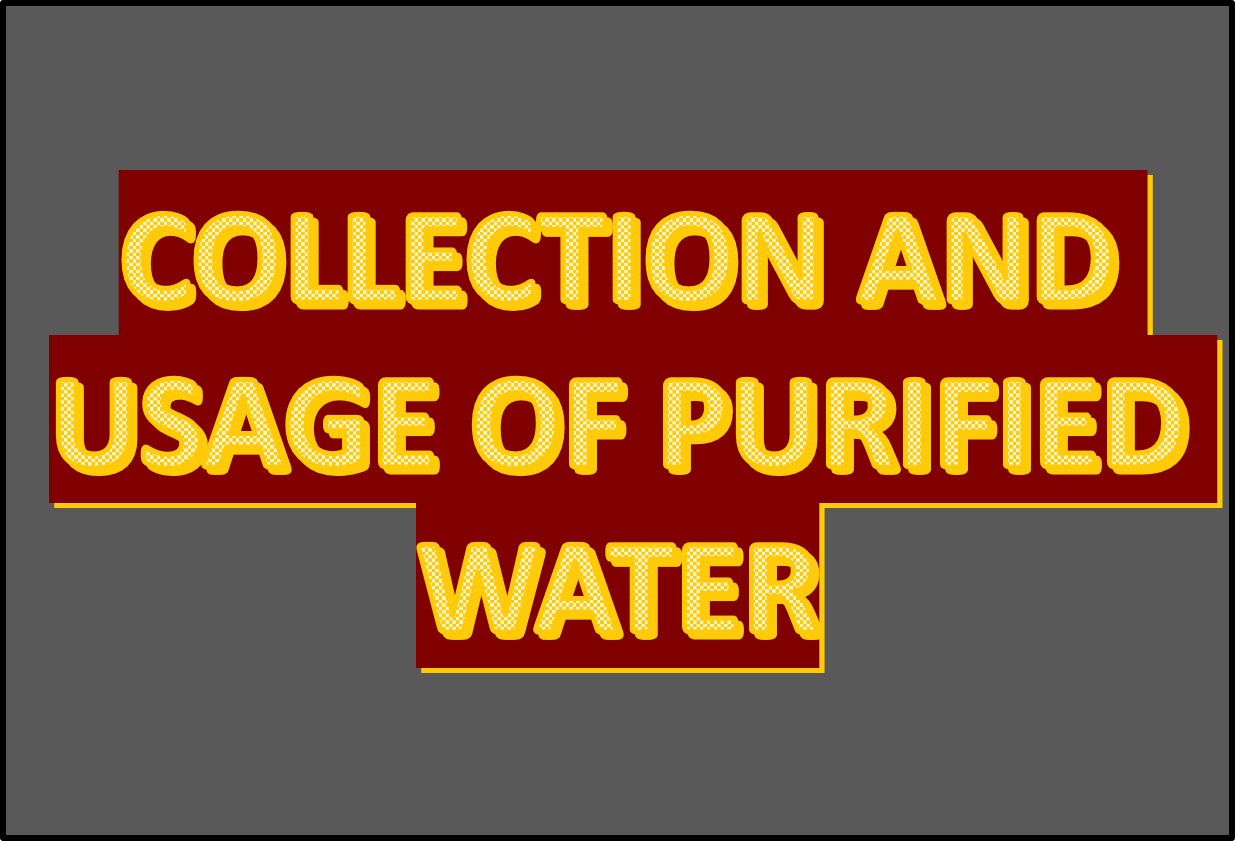SOP FOR COLLECTION AND USAGE OF PURIFIED WATER

It describes the (Standard Operating procedure) SOP for Collection and usage of Purified water in Pharmaceutical Industry.
SOP FOR COLLECTION AND USAGE OF PURIFIED WATER
I. Purpose & Scope:
- To provide a general methodology to be followed for collection and usage of purified water from user point.
- Applicable for collection and usage of purified water required for manufacturing from user point for processing.
II. Responsibilities:
• All Production personnel shall be responsible to follow and implement this SOP.
III. Requirements:
- Collect purified water in clean stainless-steel container with lid just prior use.
- Status labeling procedure must be followed.
- Wear nose mask & fresh hand gloves during operation.
- Purified water must be collected from user point only and should be used immediately after collection.
- The A.R. No of purified water is valid until a new A.R No is assigned should be validated accordingly.
- Use clean dry silicon tube for collection of water.
- Dedicated silicon tubes are available near every user point for collection of purified water.
- Silicon tubes should be replaced as and when it is damaged.
- The requirements for the change of this procedure must be regularized through change control procedure.
IV. Procedure for Processing and Cleaning :
- Ensure Purified water Sample sent to QC and it’s release from QC prior to collection.
- Take a cleaned SS container from Cleaned Equipment Hold area.
- Affix an in-process label to SS container.
- Take the tare weight of SS container.
- Transfer the SS container to user collection point.
- Connect the cleaned flexible silicon tubing to the outlet of the user point.
- Flush the purified water for 2 Minute prior to collection.
- Collect the purified water in SS container.
- Record the purified water collection time on label.
- Cover the SS container with lid, Check & record the weight of purified water for processing purpose.
- Transfer SS container to respective process area in closed condition.
- Record the A.R. No. of purified water in Batch manufacturing record.
- Record the purified water details in Annexure II – Collection and usage of Purified Water Record.
- Hang the silicon tube in inverted ‘V’ position near user point when not in use.
- The silicon tubing must be cleaned in wash area by dipping it in hot potable water Followed by rinsing with purified water during every product and batch changeover.
V. Definitions / Abbreviations :
• SOP: Standard Operating Procedure
• NA : Not Applicable
• QA : Quality Assurance
• QC : Quality Control
• SS : Stainless Steel
• A.R. No : Analytical Report Number
Annexures :
Annexure I :
DRAINAGE/FLUSHING OF PURIFIED WATER RECORD
Annexure II :
COLLECTION AND USAGE OF PURIFIED WATER RECORD
| Annexure I : DRAINAGE/FLUSHING OF PURIFIED WATER RECORD | ||||
| Sr. No. | Date | Time | Water Drained By | Checked By |
| Note : Flush/Drain the purified water for 2 Minute prior to collection. | ||||
| Annexure II : COLLECTION AND USAGE OF PURIFIED WATER RECORD | ||||||||
| Sr.No. | AR Number | Product Name | Batch Number | Water Quantity Taken | Water Quantity Used | Water Quantity Destroyed | Collected By | Checked By |
Frequently Asked Questions (FAQs)
What is purified water?
Purified water is water that has undergone a process to remove impurities and contaminants, making it safe for consumption and various applications.
How is purified water different from tap water?
Purified water has undergone more extensive filtration and treatment processes to remove impurities, while tap water may contain various minerals and contaminants.
What are common methods used to purified water?
Common methods include distillation, reverse osmosis, deionization, and filtration using activated carbon or other media.
what is primary difference between potable and purified water ?
The primary difference between potable water and purified water are in quality and intended use:
Potable water :
It meets regulatory standards for drinking water quality and should be free from harmful pathogens, contaminants, and excessive impurities.
It typically undergoes basic treatment processes like filtration, chlorination, and sometimes fluoridation to ensure safety for oral ingestion.
Purified water
It is high-quality form of water that has undergone specific purification processes to remove impurities and contaminants.
Purified water has strict purity standards, including limits on total organic carbon (TOC), conductivity, and microbial content.
It should not contain harmful substances or impurities that could affect its intended use.
The specific purification method may vary depending on the application, and it is often produced through processes like distillation, reverse osmosis, deionization, and various filtration methods.

